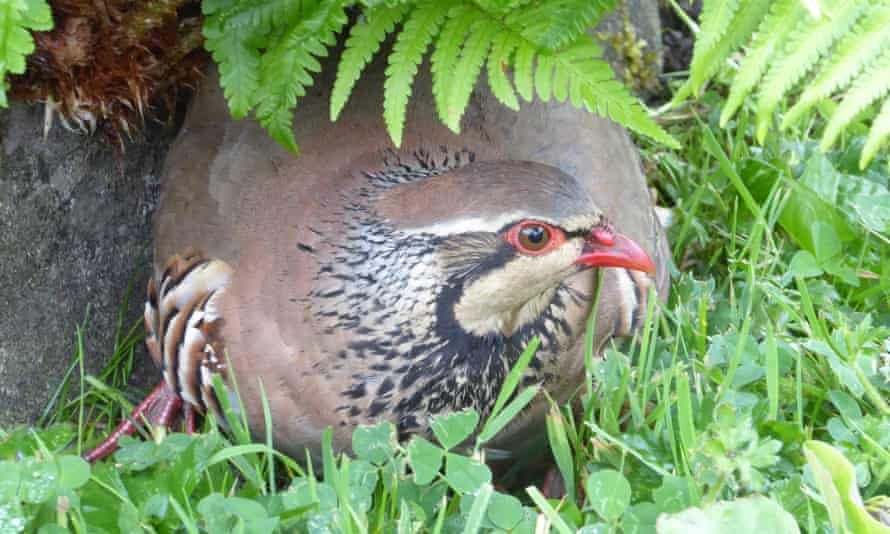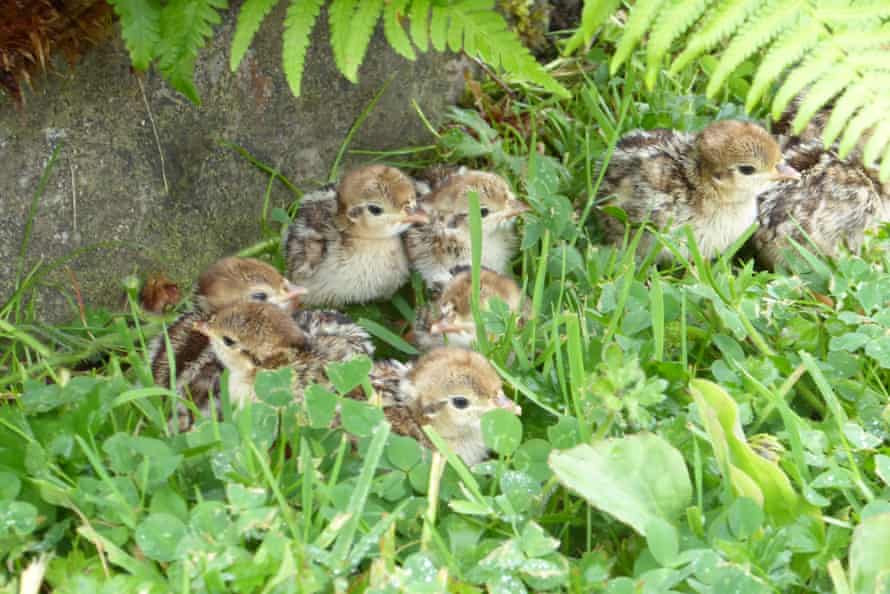Country diary: a family of partridges settle in my garden
Allendale, Northumberland: Red-legged partridges were introduced from Europe as game birds in the 18th century and have naturalised

Last modified on Mon 12 Jul 2021 06.20 EDT
For the last few weeks I’ve heard a muted clucking coming from the cephalaria. This tall lemon-yellow scabious holds its flowers high above my head, the basal leaves a thicket of cover for the bird I heard calling. There, in the innermost fastness of my tall meadowy borders, it seemed a red-legged partridge was sitting on a nest, staying hidden even when I was weeding nearby.
Then, one evening I saw a plump, beautifully patterned bird feeding in the field. It flew back into the garden and snuck past the greenhouse door before slipping between dense ferns and into the border.
Red-legged partridges, Alectoris ruff, were introduced from Europe as game birds in the 18th century and have naturalised. A couple of pairs breed in the fields around my house every year. These wild non-native birds seem to have settled without problem and native grey partridges, Perdix perdix, also breed in the Allen Valleys. Both sexes look alike and the female lays two clutches; one she incubates and the other the male sits on, so the bird brooding on the eggs here could have been male or female.

On my way to cut a lettuce for supper I nearly stepped on some chicks – the partridges had fledged. Chivvied by their agitated parent, they disappeared under the box hedge where they stayed tight for a quarter of an hour. On re-emerging – to the sounds of peeping and quiet parental clucks – I counted 12, picking at tiny insects and seeds amongst the white violas. Twelve mottled and striped chicks that could fit beneath the puffed up rotund ball of the parent for protection. They aren’t able to fly for 10 days after fledging.
Being so close, I could appreciate the birds’ exquisite feathers: a red-brown head and white throat with a black necklace, sandy grey back for camouflage and striking rufous barred flanks. Red beak and feet and a dark eye in a red eye-ring watching me. I took a quick photograph and left them to forage. My last view from the window was of the family vanishing into the lawn meadow among wood cranesbill and campion, bent under the weight of much needed rain.